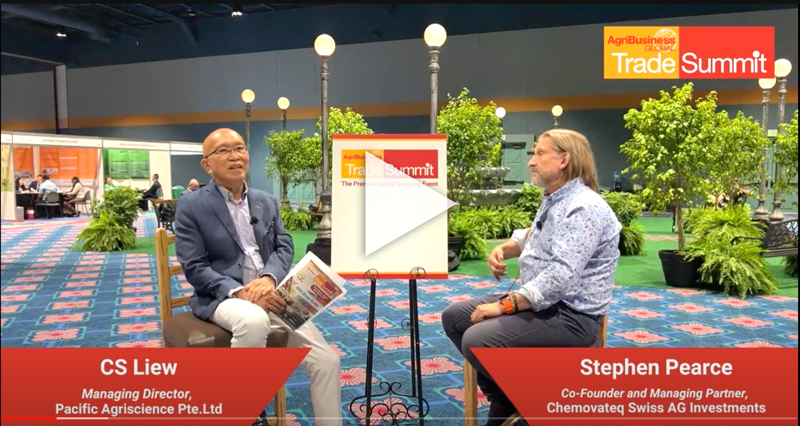AgriBusiness Global LIVE! Entrevistas: Mudanças nos modelos de negócios no mercado de proteção de cultivos

Role para baixo para ler
 CS Liew |
 Steve Pearce |
CS Liew, Managing Director for Pacific Agriscience e Steve Pearce, Co-Founder and Managing Partner for Chemovateq Swiss AG Investments discuss crop protection marketing and service model changes happening globally as companies overstep retailers and work directly with growers. Find out where and under what circumstances this direct-to-grower model works and the implications for the supply chain.
*Esta é uma transcrição parcial e editada.
CS Liew: We’re going to talk about the changes in the supply chain, where traditionally you have the manufacturers going down to the importers, and then the national distributors, dealers, and finally to the growers. Now, more and more, I’m seeing suppliers want to go more directly to the big farms.
In fact, in some developing countries, such as India, companies are talking about going directly to the smaller farmers as well. It’s a major challenge, but they tend to see some opportunities in that direction. If they have good offerings, they can go down to the smaller farms and do a two-way kind of trade. For example, I will take your vegetables or fruit, then you take my inputs, so it’s like a bartering.
But let me paint you the current scenario in terms of international markets for crop protection. We have overproduced generic pesticides, right? And then compounding that there is overproduction in both China and India. In India, in the last few years, there is a tremendous number of formulators turning themselves into technical great manufacturers as well.
Also, the fact that now farmers are also complaining they’re not making money, leading to all the protests that we saw in Europe at the beginning of this year. At the farm gate, farmers are saying we’re not making money, and yet consumers are saying we’re paying so much more for food. These issues that we’re facing today don’t seem to make sense, so we’re here to talk about how to understand to help navigate.
One area that we want to focus on today is the supply chain, right? In terms of crop inputs. Steve, what do you think of this scenario that I have painted? Is that more or less what you see as well?
Steve Pearce: It would be easy to sum up in one word the overcapacity issue and that would be the word: Insanity.
If you’ve got massive overproduction at the levels that we’re seeing, that’s bad for everybody, right? The cost of serving a customer becomes more difficult if everybody’s working to lower margins. Lower margins mean that there’s less money for innovation. If there’s less innovation, then you have to make do with tools that you’ve got, which makes it even harder. Especially in places like Europe, for example, where a lot of chemistries are banned without tools to replace them.
I would say that in the last 18 to 24 months, we’ve had a fairly unique set of circumstances. So how are margins going to recover? I’m really not sure yet. How do you build sustainable margins in the value chain with the legacy of what we’re seeing now? Because if prices start to recover, more people are going to start manufacturing, and the price is going to drop again.
It’s going to be very difficult from a supply chain perspective. I would assert that if you don’t have an agile supply chain where you’ve got your sales and operations planning process. It’s going to be a very hard year. •
Listen to the rest of the video to hear CS Liew and Steve Pearce discuss:
• Biologicals and ag tech markets
• Integrated Pest Management (IPMs)
• Supply chain
